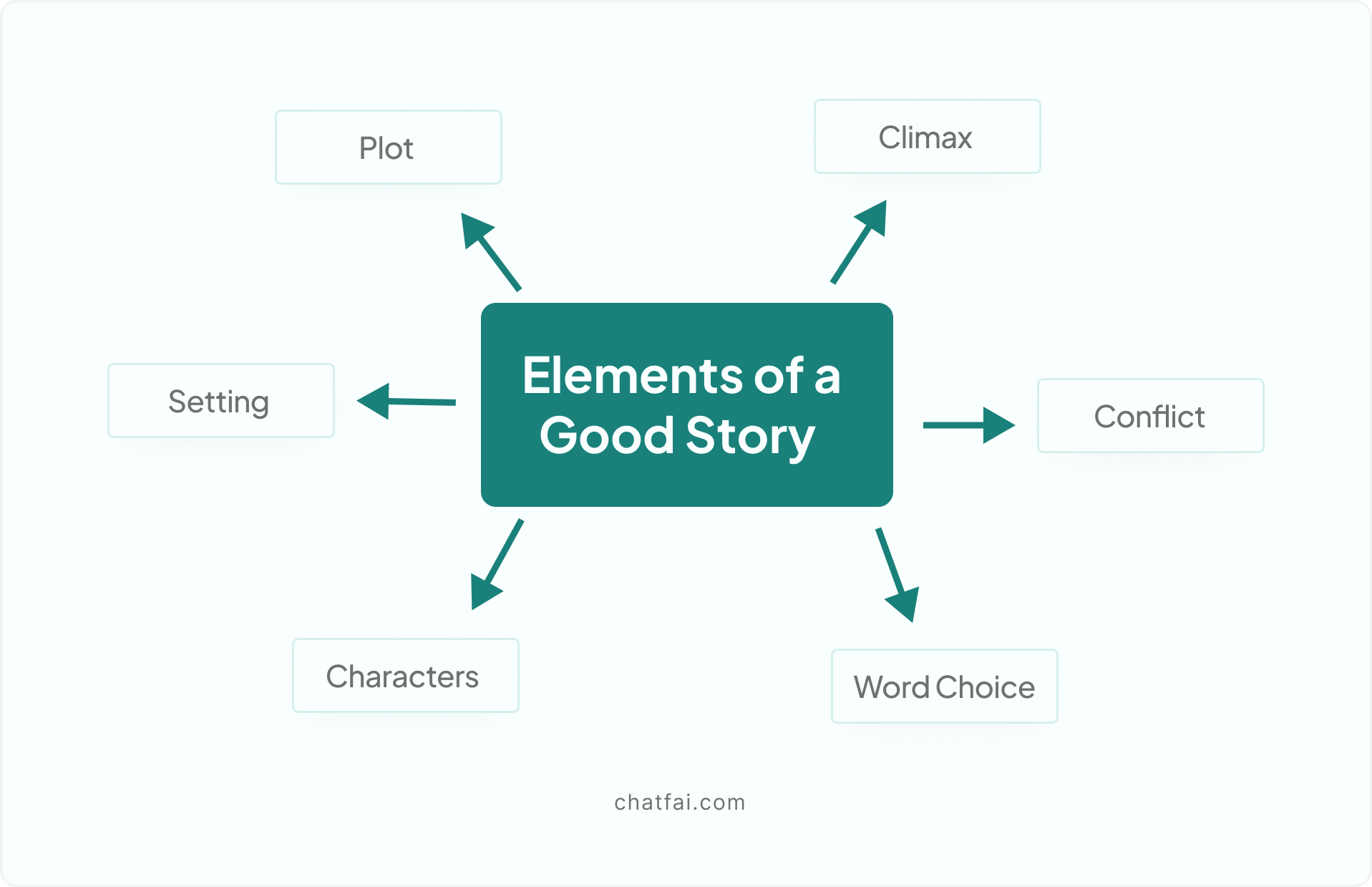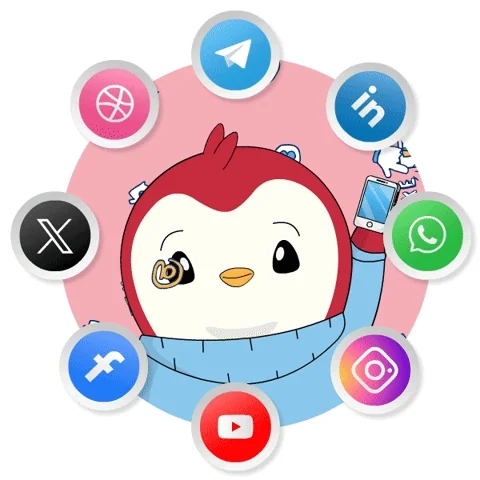Storytelling is like magic. It’s how we share our experiences, dreams, and ideas with others. Whether you’re chatting with friends, teaching a class, or writing a film, great storytelling techniques can make your tales come alive.
Good stories grab attention, spark emotions, and help us connect. But what are some techniques that will make your story worth listening to? What attracts the audience or resonates with them?
In this guide, we’re exploring 8 unique storytelling techniques to supercharge your skills. These techniques work for kids, teachers, writers, and filmmakers alike.
Let’s make your storytelling fun and unforgettable.
Elements of a Good Story
AI in storytelling has changed entertainment, games, movies, and more. Here are some elements that must be in a story to make it stick:

8 Simple Techniques For Telling Great Stories
Storytelling is a way to communicate your point of view to others, and here are some of the best techniques to tell great stories:
1. Hero’s Journey Technique
The Hero’s Journey is one of the classic storytelling techniques that outlines how a main character (the hero) goes through a transformative adventure. This journey usually involves several key stages:
- Normal Life
- Going out of their comfort zone
- Meeting a mentor
- Starting the journey
- Challenges
- Climax
- Returning home
These key stages make the classic storytelling structure more fun and easy to understand. Let’s look at an example to understand this better.
You may have watched The Lion King, but who hasn’t?

Here’s how this story fits with the hero’s journey technique.
Simba begins as a carefree cub in the Pride Lands (ordinary world). After his father’s death, he feels guilt and runs away (Refusal of the call). Meeting Timon and Pumbaa helps him find joy again (Meeting the mentor).
Anyhow, he returns to reclaim his rightful place (Crossing the threshold) and faces a scar (climax). By accepting his role as king, he transforms and brings balance back to the kingdom (Return home).
Tip: Here’s a unique and interactive AI storytelling app for you.
2. Build Tension with Conflict
The next storytelling technique on our list is building tension with conflict. Conflict is an important part of storytelling that keeps readers interested and engaged.
It creates tension and drives the story forward, making audiences eager to discover what happens next.
You agree, right?
 This storytelling technique in films introduces challenges that the characters must face, which helps maintain reader interest.
This storytelling technique in films introduces challenges that the characters must face, which helps maintain reader interest.
Here are some types of Conflicts:
- Person vs. Self: This type of conflict involves a character struggling with their thoughts, feelings, or decisions.
- Person vs. Person: This conflict occurs between two characters, often leading to confrontations. For example, a hero might face off against a villain.
- Person vs. Society: In this conflict, a character fights against societal norms or rules.
Well-managed tension and conflict keep the audience on the edge of their seats.
3. Create Relatable Characters
Creating relatable characters is an essential storytelling technique for telling a story that connects with people. Readers who see themselves in characters build emotional connections that make the story more powerful. Hmmm.

Now, let’s talk about the importance of relatable characters. Relatable characters make it easier for readers to feel emotions and empathize with their struggles. When a character faces challenges or has flaws, readers can see parts of themselves in those situations.
Now, the fun part is creating characters and talking to AI characters. You can use ChatFAI for this. All you need to do is fill in the details, including:
- Name
- Bio
- Profile Picture
- First Message
- Public Description
- Choose privacy
- Enable voice option
And Tadaaa, it’s done.
Learn how to generate and talk to AI characters. Create your favorite character in seconds. This character could be from movies, TV shows, books, comics, etc. You name it.
AI storytelling is a thing now, and it has made life easier and simpler for many people. For a more detailed understanding, check out this ChatFAI guide.
4. Use Visual Storytelling and Imagery
Visual storytelling involves using vivid images and descriptive language to bring a story to life. This approach helps readers feel emotions deeply, making the experience more engaging. True, right?
 Sensory storytelling appeals to the senses—sight, sound, touch, taste, and smell. It’s like a full-on vibe check.
Sensory storytelling appeals to the senses—sight, sound, touch, taste, and smell. It’s like a full-on vibe check.
 A powerful storytelling technique is ‘show, don’t tell.’ Instead of telling readers how a character feels, you show it through their actions and surroundings.
A powerful storytelling technique is ‘show, don’t tell.’ Instead of telling readers how a character feels, you show it through their actions and surroundings.
For instance, rather than saying, “She was scared,” you could describe her trembling hands and how her breath quickens. This method pulls readers into the story, allowing them to experience the emotions.
When it comes to online storytelling, adding multimedia elements like images, videos, and graphics takes the whole thing to the next level. You agree, right?
 A strong image can show feelings that words sometimes just can’t capture. It’s all about making the story pop and keeping it real.
A strong image can show feelings that words sometimes just can’t capture. It’s all about making the story pop and keeping it real.
You can use an AI Image generator for your story as well.
5. Incorporate a Clear Message or Theme
Every story should have a clear message or theme. This could be about strength, kindness, or innovation. Having a theme gives your story purpose and helps readers understand its importance.
Makes sense, right?
 Storytelling techniques for kids and these themes create meaningful connections between the story and the reader. When people recognize a theme, it can resonate with their lives, making the story more relatable.
Storytelling techniques for kids and these themes create meaningful connections between the story and the reader. When people recognize a theme, it can resonate with their lives, making the story more relatable.
If you want something fun for your children here are some text-based games.
6. Include Surprise or Plot Twists
The next storytelling technique is adding surprises and plot twists to your story. Surprises and plot twists can make stories super memorable and impactful.
They keep readers on their toes and create excitement, making them eager to see what happens next.
 Surprises add excitement and keep the audience engaged. A good twist can change how you see the whole story, making it more interesting. It keeps people guessing and wanting to know more.
Surprises add excitement and keep the audience engaged. A good twist can change how you see the whole story, making it more interesting. It keeps people guessing and wanting to know more.
Here’s an example of a brand adding surprise for their audience.
Their product launch events often include surprising announcements or features that wow the audience. The buzz around these events keeps fans excited and looking forward to what’s next.

Apple hosted a second event in October 2024, focusing on new M4 Macs and possibly new iPads. The 24-inch iMac will get an M4 chip with better AI performance.
The MacBook Pro will also be updated with M4 chips, while the Mac mini may have a new, smaller design. The iPad mini seven might feature upgraded cameras and a new chip; a low-cost iPad is in the works.
While these updates seem expected, there’s room for surprises, especially with performance boosts and design changes.
7. Keep It Simple and Authentic
The next storytelling technique is keeping things simple and authentic. It is important to keep stories simple.
When you cut out unnecessary details and focus on the main message, the story becomes clearer and easier to understand, helping people connect better with the message.

Being authentic means being real and honest. When brands share genuine stories, it helps build trust with their audience. People are likely to connect with a brand that feels sincere and relatable.
Authentic storytelling shows that a brand cares about its values and its customers.
8. Optimize Storytelling for Digital Platforms
Regarding digital storytelling techniques, it’s super important to change your message for different platforms. Each platform has its audience and style, so how you tell your story can change a lot.

When it comes to storytelling, each platform has its own vibe.
On Instagram, it’s all about the visuals; people scroll fast, so you want eye-catching images and quick videos that grab attention.

Also, keep your captions snappy and playful, and don’t forget the hashtags to reach more folks. Use the SocialBu caption generator and let the AI do its magic.
Now, switch to LinkedIn, and it’s a whole different game.

Here, the crowd is more professional, so your stories should focus on career growth, industry insights, or inspiring success stories. Longer posts that share valuable info or helpful tips work great.
Here’s a guide to LinkedIn summary generators that can help you write a clear and strong summary highlighting your skills and goals.
To make your storytelling even more engaging, you can use interactive content. Here are a few things that can help:
Using different storytelling techniques to fit different platforms and interactive tools can help you create more engaging and effective content.
Conclusion
Storytelling is a powerful way to share ideas and connect with others. Effective storytelling techniques can help you create engaging and memorable stories, whether telling stories for kids, teaching, or making films. Remember the key points: start with the Hero’s journey, build tension with conflict, and create relatable characters.
And if you want to generate characters of your choice, head to ChatFAI and talk to your favourite character. Don’t forget to add surprises or plot twists to keep your audience guessing. Keeping your stories simple and authentic helps build trust while improving your storytelling for different platforms. Whether you share on Instagram or LinkedIn, modify your approach to fit the audience.
So go ahead and start telling unforgettable stories.
FAQs
Q: What are the four types of storytelling?
Here are four types of storytelling:
- Narrative Storytelling
- Visual Storytelling
- Interactive Storytelling
- Digital Storytelling
Q: What are the 5 C’s of storytelling?
The 5 C’s of storytelling are:
- Character: The main person in the story.
- Conflict: The challenge or problem the character faces.
- Context: The setting and background of the story.
- Climax: The turning point in the story.
- Conclusion: The outcome of the story.
Q: What is the technique of storytelling?
Here are storytelling techniques in short:
- Show, Don’t Tell
- Flashbacks
- Dialogue
- Pacing
- Point of View
- Theme
Q: What are the 5 P’s of storytelling?
The 5 P’s of storytelling are:
- People
- Plot
- Purpose
- Perspective
- Place